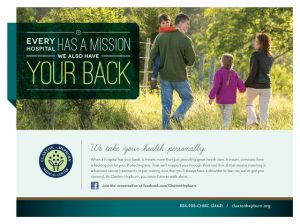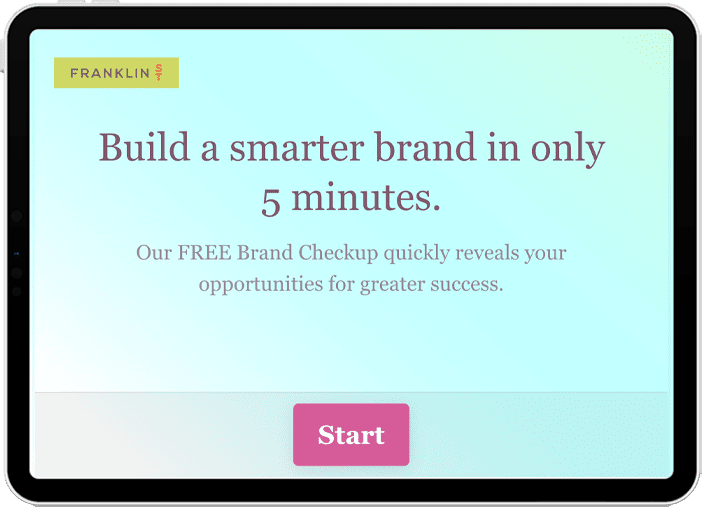I can’t think of a more complex business category to market than health care. Finance is complex, but the audience for financial products most likely isn’t feeling the stress of a cancer diagnosis, which is what we often encounter when we market cancer services. As healthcare marketing professionals, our success is based on our ability to reach, nuture and convert prospects into patients. With shrinking budgets and compressed timelines, it’s easy to cut out research on our audiences. The defacto strategy often becomes marketing to “Women, ages 25-64, living in XYZ zip codes.”
Great brands speak with authenticity and empathy to their audiences because they know and respect them. As healthcare marketing professionals, we have to ask ourselves, How can we be succesful if we only see our audiences on a one-dimensional level?
We’ve long advocated the use of supplementing quantitative research with qualitative to better understand the nuances and complexities of our healthcare audiences. In an intimate focus group setting with a professional moderator, you can probe your prospective patients to learn more about their decision-making process, media consumption habits, and even the misinformation they might believe about your brand. When we have the opportunity to conduct this type of research, we have a much clearer set of insights on who are audiences are and how to positively impact their health care decision-making in authentic, actionable ways.
Recently, though, we’ve grown our audience profiling techniques to apply Persona Modeling, which is giving our clients a set of richer insights on how to reach, nurture and convert those prospects into patients.
Persona Models distill consumer research into a simple but powerfully informative guide that brings the audience to life in ways that demographics alone can never achieve.
Here are several insights of the audience that Persona Models can provide:
- Hopes and fears
- Activities, interests and passions
- Who the loved ones are that they want to get better for
Persona Models also help us to understand how our audiences perceive their disease states, and whether they feel any stigmas about their health condition, or, on the flip side, if they are likely to leverage their condition as part of their identity.
For example, in developing a Persona Model for a client that helps people with limb loss, we discovered that amputees don’t want to be associated with limb loss in the same ways that a cancer surivor may broadcast the fact that she beat cancer. This key insight, based on our Persona Modeling, informed our communications strategy to drive more engagement with our client’s resources for those living with limb loss.
Persona Models also help healthcare marketers in audience segmentation. Because the purchase cycle for health care is complex, and because hospitals treat so many people of different ages, ethnicities, incomes and lifestyles, we find it’s a fool’s errand to focus on just one or two “audiences” when developing campaign strategies. For example, when developing websites for our clients, we may create five or six different Persona Models as we establish the site architecture, use case planning, design, content strategies and calls-to-action.
Persona Models allow us to create as many Personas to reach, engage and convert as needed, while at the same time identifying the unique characteristics that allow us as communicators to respect the nuances and complexities of our audiences.
The actual Persona Model we create may be different depending on the use and desired outcomes, but for illustration purposes, here’s the guide we used recently for one of our clients. This one page document gave us and our client a highly visual reference point for establishing tone, brand, attitude, perceptions and connection points with our target audience.

In addition to the visual guide, we also write a narrative description of the audience that goes beyond the basic demographics and speaks to the human qualities of our audience: who she is, how she lives, what good health care means to her, and her desired relationship with a provider.
Persona Models also help us and our clients to answer a very important question that Sally Hogshead, the award-winning brand strategist, often asks of communications strategies: Is this bringing value (to our audience), or are we taking up space?
By personifying our audience–giving them a voice, a heartbeat–it makes it painfully easy to evaluate the strengths of our campaign strategies and concepts. We don’t evaluate an ad layout in a vacuum, because we’re not talking to “women,” or “men who need a prostate exam.”
Below is an ad we developed as part of a larger campaign for a national health system to use in different markets around the country to increase breast health services utilization. For this campaign, we conducted online focus groups with women all over the country. Over the course of several nights, our professional moderator asked the women in chat rooms about their perceptions of breast health, how active they were in routine mammographies, what hopes and fears they had, and what they needed and wanted to know about making informed decisions about their breast health needs. Those insights, later mapped in a Persona Model, led us to develop messages that had a higher likelihood of connecting with the audiences we wanted to reach, nuture, and later convert into patients if there was a health care need.

Sometimes Persona Models allow health care providers to create more authentic, richer brands with their paid advertising and marketing efforts. Though providers may have multiple audiences, and hence, multiple Persona Models, it’s not uncommon for the Models to have a Venn Diagram-like connection point among audiences. It’s often in that shared space of what unifies different audiences that health care providers can tap into for branding opportunities.
One of our clients in upstate New York has multiple audiences based on the services they provide. As we developed the Persona Models for each of the unique audiences, we overlaid the characteristics that unified all of the hospital’s audiences. In that shared space, we identified a commonality among all audiences of hard work, family, and resilience. In the ad below, you’ll see how this Persona Model helped us and our client to develop branding that connected with the hospital’s multiple audiences based on shared philosophies.

Your audience may be women, 25-64, living in XYZ zip codes. But they are so, so much more than that. You owe it to them to know them and bring them to life if you want your communications strategies to reach, engage and convert them. Persona Models are a powerful tool to achieve this important result.

